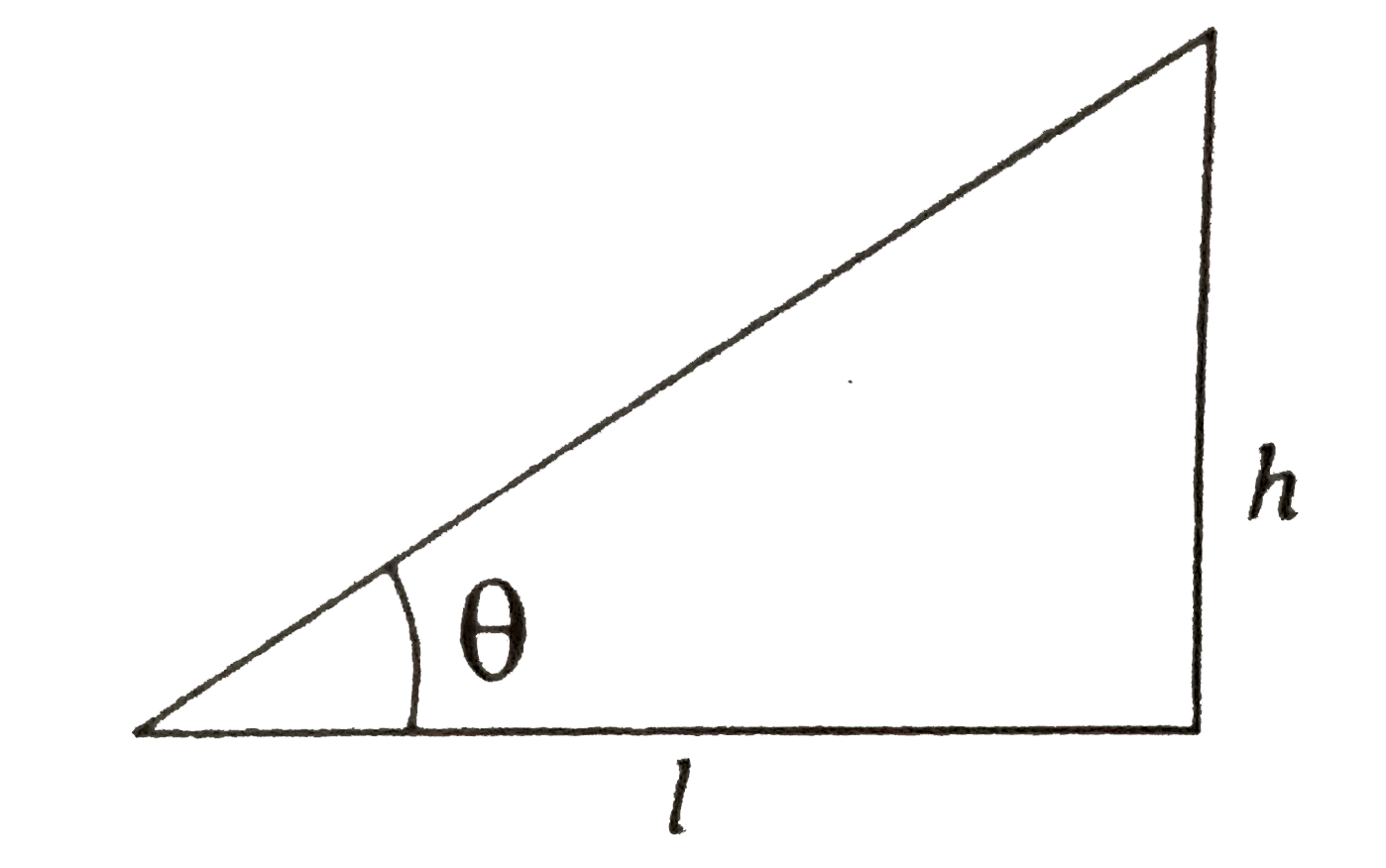A train has to negotiate a curve of radius 2000 m. By how much should the outer rail be raised with respect to inner rail for a speed of 72kmh−1. The distance between the rails is 1 m.
Given, v=72km h−1=72×518=20ms−1
l = 1 m, r = 2000 m, g=10ms−2
We have, tanθ=v2rg

Also, tanθ=hl
⇒ v2rg=hl
⇒ h=v2lrg
∴h=(20)2×12000×10=150m
=10050=2cm
Topper's Solved these Questions
- BOOK - DC PANDEYCHAPTER - CIRCULAR MOTIONEXERCISE - Solved Examples2videos
CIRCULAR MOTION
- BOOK - DC PANDEYCHAPTER - CIRCULAR MOTIONEXERCISE - Miscellaneous Examples5videos
CIRCULAR MOTION
- BOOK - DC PANDEYCHAPTER - CENTRE OF MASS, LINEAR MOMENTUM AND COLLISIONEXERCISE - Level 2 Subjective21videos
CENTRE OF MASS, LINEAR MOMENTUM AND COLLISION
- BOOK - DC PANDEYCHAPTER - COMMUNICATION SYSTEMEXERCISE - Only One Option is Correct27videos
COMMUNICATION SYSTEM
Similar Questions
A train has to negotitate a curve of radius 2000m. By how much should the outer rail be raised with respect to inner rail for a speed72km/h. The distance between the rails is 1m.
View SolutionA train has to negotiate a curve of radius 400 m. By how much should the outer rail be raised with respect to inner rail for a speed of 48 km/hr. The distance between the rails is 1 m.
View Solution
Knowledge Check
- Question 1 - Select One
A train has to negotiate a curve of radius 800 m. By how much height should the outer rail be raised with respect to inner rail for a speed of 96kmh−1? The distance between the rails is 1 m
A4.4 cmB9 cmC8.8 cmD3.3 cm - Question 2 - Select One
A train has to negotiate a curve of radius 400m. The speed of the train is 72km/hour. The horizontal distance is to be raised with respect to the inner radius by h. IF distances between rail is l=1 m, the value of h will be (g=10m/s2)
A15 cmB10cmC5 cmD2.5 cm - Question 3 - Select One
A train has to negotiate a curve of radius 400 m .The speed of the train is 72 km//h. If the distance between the two rails is 1 m ,then the outer rail will be raised over the inner rail by (g=10m/s2)
A15 cmB10 cmC5 cmD2.5 cm
A trains has to negotiate a curve of radius 400m. By how much should the outer rail be raised with respect to the inner rail for a for a speed of 48kmh−1 ? The distance between the rails is 1m.
View SolutionThe radius of curvature of a railway track at a place where the train is moving at a speed of 72kmh−1 is 625m. The distance between the rails is 1.5 m. Find the angle and the elevation of the outer rail so that there may be no side pressure on the rails, Take g=9.8ms−2.
View SolutionA train is moving at the rate of 60 km per hour around a curve of radius 500 m and the distance between the rails is 170 cm. By how much the outer rail be raised above the inner one so that there may be no lateral thrust on the outer rails ? (g=9.8ms−2)
View SolutionThe radius of curvature of railway track at a place where the train is moving at a speed of 72kmh−1 is 625m The distance between the rails is 1.5m Find the angle and the elevation of the outer rail so that there may be no side pressure on the rails Take g=9.8ms−2 .
View SolutionThe metro which has been recently inroduced in Mumbai, encounters a sharp turn between Andheri and Chakala. To avoid any derailing issues, the authorities thought of banking the rails.The turn is of a radius of 400 m and the maximum speed attained by Mumbai Metro is 72 km/hr. IF the distance between the rails is 1 m then through what height should the outer rail be raised?
View Solution

